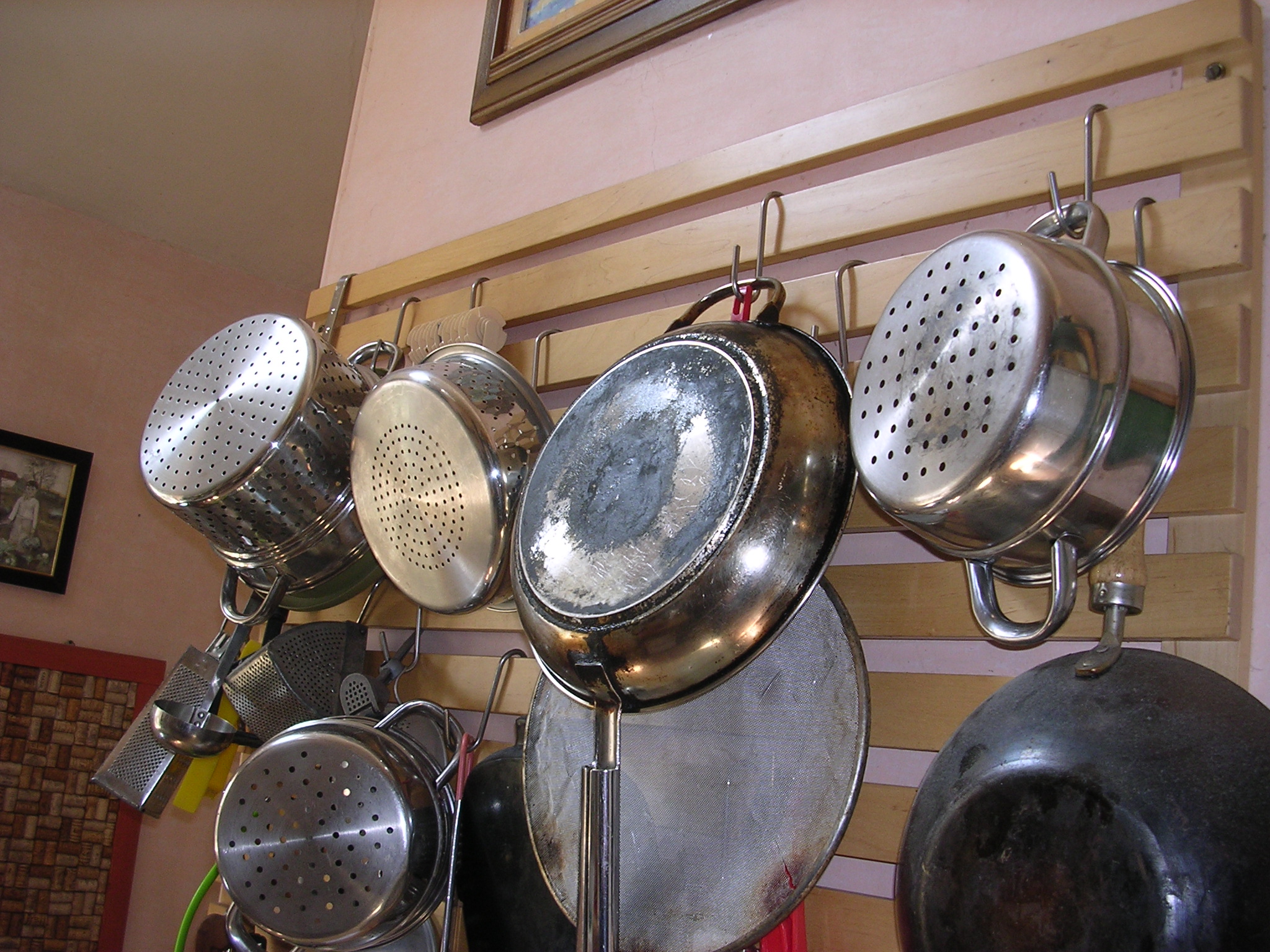
I started to enjoy cooking when I dumped the convenience items that are supposed to make it easier.
My husband had been the main cook in our family for years, but after I had a baby, I found myself at home more. So I dusted off my old cookbooks and rediscovered the kitchen. I decided to cook the way I’d always wanted to – using fresh whole foods ingredients. And I stopped worrying about how long things took. Time was on my side, after all. The meals I put together were delicious, remarkably affordable, and cooking them was fun. (I should mention that I also discovered my now-favorite cookbook around then – Feeding the Whole Family by Cynthia Lair, and her amazing recipes contributed greatly to my success.)
So I wondered, could I also bake organic, 100% whole wheat bread once a week and save the $4.00 a loaf we were shelling out for it at the health food store? I poured over The Laurel’s Kitchen Bread Book. At times it felt like I was deciphering a foreign text. Instead of, “knead for ten minutes,” it said things like, knead the dough until you can “pull it into a paper-thin sheet, smooth and bright. When you hold it to the light, you can see the webbing of the gluten strands….” What? Maybe $4.00 wasn’t really so much for a loaf of bread.
Then I cut into my first home-baked loaf, and I was hooked.
Something happened when I started to cook from scratch more. I found myself reading cookbooks, not just a recipe or two, but every page. I devoured books about bread-baking, jotting down different methods, rising times, and ideal resting temperatures. And I scoured the library shelves for encyclopedias of whole foods.
I was shocked by how ignorant I was about real food. After all, I’d been eating “organic” food and reading about health and wellness for the better  part of a decade. I knew that avocados and blueberries were good and hydrogenated oils were bad. I’d read my Michael Pollan. But cooking exclusively with whole ingredients introduced me to food in a different way – less as something to eat and more as whole, once living things. I wanted to know what these plants looked like sprouting from the earth , where they grew, and who grew them.
part of a decade. I knew that avocados and blueberries were good and hydrogenated oils were bad. I’d read my Michael Pollan. But cooking exclusively with whole ingredients introduced me to food in a different way – less as something to eat and more as whole, once living things. I wanted to know what these plants looked like sprouting from the earth , where they grew, and who grew them.
I was astounded by the complex processes I was learning that had been perfected over centuries and handed down from one generation to the next – like turning flour, yeast, and water into bread. They were art forms. And most of them had been honed by a group of people I’d never thought much about – housewives. But the art these women created seem no less worthy of admiration than a piano concerto or fresco.
These days I spend more time in the kitchen than ever. Cooking is more labor-intensive, more time-consuming, and more general effort. But I love it. It’s creative work, making meals from raw ingredients and spices. The house smells of fresh-baked bread; or of garlic, oregano, or basil; or of stew slowly simmered all day. It feels more like, well, home. Dinner is now a discovery of new tastes, not a rehash of processed sauces or canned soups, as it once was on my cooking nights. And 1:00 on bread day, when the steaming loaves come out of the oven, is as close to perfection as this life offers.
I’ve discovered that slow food, for all its inconvenience, is the best food on earth. And I’m not alone. A whole movement of slow food enthusiasts are out there spreading the word that when we entirely abandon our kitchens, we’re at risk of deserting our health and taste buds too. America’s emphasis on quantity and speed over quality also puts us in danger of losing heirloom fruits and vegetables, heritage livestock breeds, and rich food traditions.
Stay tuned for an article about the Slow Food movement next week.
Have you discovered or rediscovered your kitchen lately? What do you like to cook?





